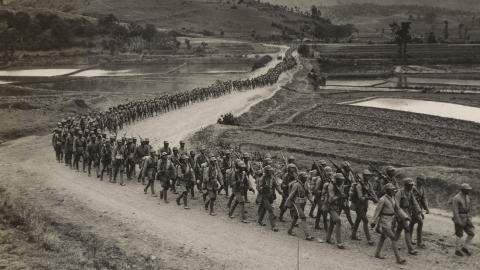The de Havilland Mosquito - the 'wooden wonder'
World War Two was about many things: defeating the toxic political ideology of Fascism, resisting the spread of tyranny across the world, learning to feed a family of four on two parsnips and a teaspoon of tree bark a week. All very noble and heroic. But what about that other key strategic aim? You know the one. The strategic aim of winding up top-ranking Nazis so much that they gnashed their teeth, shook their fists and threw massive strops, like the ridiculous cartoon baddies they really were.
This aim was efficiently achieved by a specific British aircraft called the Mosquito. 'It makes me furious when I see the Mosquito… I turn green and yellow with envy,' Hermann Goring barked.
'The British, who can afford aluminium better than we can, knock together a beautiful wooden aircraft that every piano factory over there is building, and they give it a speed which they have now increased yet again. What do you make of that? They have the geniuses and we have the nincompoops!' he added, sounding exactly like an angry Nazi on Allo Allo. 'After the war is over I'm going to buy a British radio set – then at least I'll own something that has always worked!' In episode 6 of WW2 Treasure Hunters, Suggs and Stephen visit Little Staughton in Cambridgeshire looking for evidence of these amazing 'wooden wonders' at a former Pathfinders Force airbase.
The Pathfinders were elite pilots who flew ahead of the bombers to scope and mark out targets with flares, boosting the accuracy of attacks on enemy sites. The agile, wily Mosquito was a perfect fit for this kind of mission, but – as it turns out – it also came in handy in all kinds of capacities. Indeed, it was the Swiss Army Knife of RAF aircraft, being repurposed to serve as a day bomber, night bomber, fighter, reconnaissance plane, Royal Navy torpedo bomber… The thing was practically a real-life Transformer. And, incredibly, it was made of wood.
The 'Wooden Wonder', as it became known, was created by the de Havilland Aircraft Company, a trailblazing firm set up by one of the cleverest, bravest, most important Englishmen you’ve never heard of: Captain Sir Geoffrey de Havilland. Born in 1882, he was an engineering prodigy, cobbling together his own motorbikes and cars as if that was a totally normal thing for a man in his 20s to do.
He eventually turned his focus to planes. He didn’t have any flying experience, because it was the year 1909 and practically nobody did apart from the actual Wright Brothers. But that was a mere trifle to the intrepid de Havilland, who decided to learn to fly by building his own plane and, well, flying it.
He crashed in seconds, got out and decided to build another plane and this time not crash it. That was a good move, and just a few years later, with the outbreak of WW1, he became an active participant in the Royal Flying Corps, while also designing the planes being used to battle the enemy. So not only was he a dashing pilot in the fledgling RAF, but he was also the genius creating the very things he was flying in.
After the war, de Havilland’s own company came up with the Albatross, a plane made of balsa and plywood, kind of like a model aeroplane, only massive and brilliant. The design principles of the Albatross were later adopted for the creation of the Mosquito, with Geoffrey de Havilland cleverly realising that supplies of metal would run low during another world war. By using 'non-strategic materials' like wood, they could churn out the planes easily using the skills of the civilian carpenters and piano-makers who so riled up Hermann Goring.
The Mosquito aroused some scoffing and cynicism even among the Allies at first. One US aviation firm dismissed it as having 'sacrificed serviceability, structural strength, ease of construction and flying characteristics in an attempt to use construction material that is not suitable for the manufacture of efficient airplanes.'
These were words they would soon have to eat like a giant slab of all-American apple pie. The Mosquito became one of the most versatile and beloved planes of the war, and is still particularly remembered for its part in the daring Operation Jericho raid. This was an attempt, in 1944, to liberate a prison in German-occupied France where prominent Resistance fighters were being kept. The plan was both surgical and crude. Surgical, because the Mosquitos would swoop in nail-bitingly close to specific parts of the target, and crude because the aim was literally to blow giant holes in the prison walls so the POWs could run out to freedom.
While the winter weather was atrocious (one pilot in the raid said that when the order came to take off, he assumed it was 'either some form of practice or some form of practical joke'), the raid did the job. Flying just 15 metres off the ground, the Mosquitos breached the prison walls, allowing hundreds to escape
Geoffrey de Havilland’s company flourished after the war, later developing the very first commercial jet airliner. But it’s the Mosquito that remains the most celebrated product of his brilliant mind. And there’s now a real prospect of an authentic Mosquito being built from scratch, after the discovery of a long-lost stash of WW2 technical drawings discovered in an old factory in 2017. Could a British legend take to the skies again someday soon? Well, it would have really wound Goring up, so it’s worth doing it for that reason alone…
















